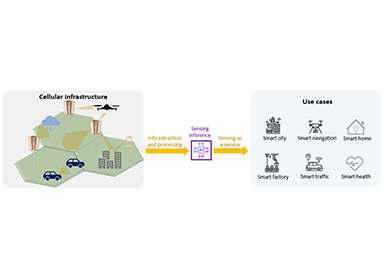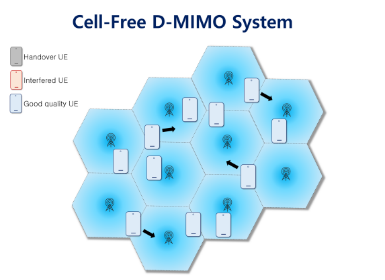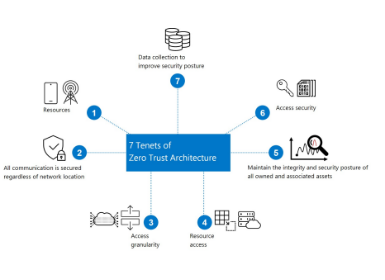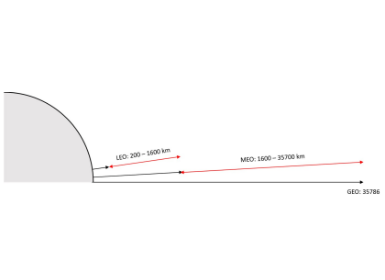Communications
Upper Mid-Band Spectrum for 6G: Opportunities and Key Enablers
1. Introduction
The demand for higher data rates has been growing exponentially recently with provisioning of new services such as fixed wireless access (FWA) and extended reality (XR). As a consequence of this new demand, average data volume consumption per user has significantly increased in the 5G and 5G-Advanced networks compared to 4G. Analysis from Open Signal [1] shows that 5G users on average consume up to 2.7 times more data than 4G users. Based on analysis from PwC [2], services such as FWA and metaverse/mobile gaming consume around 23 and 4 times higher data volume than mobile data users, respectively. This blog will provide an overview of the opportunities and challenges of the upper mid-band spectrum, also known as frequency range 3 (FR3). We will also discuss enabling technologies for sustainable/energy-efficient 6G networks providing ubiquitous coverage using the FR3 spectrum.
2. 6G Spectrum Discussions
In order to realize the full potential of 6G – in terms of ubiquitous coverage that supports higher data rates and increased capacity for various applications and services – it is important to utilize all the spectrum available for International Mobile Telecommunications (IMT) in the low, mid, and high-frequency bands. Full spectrum utilization necessitates the evaluation of new spectrum bands for 6G. At the World Radiocommunication Conference (WRC-23) held in Dubai, UAE in Dec. 2023, candidate bands were agreed on for IMT identification at WRC-27, which are mainly considered for 6G. The candidate bands in the lower and upper mid-band, for IMT identification in each Region1 are shown in Figure 1.

Figure 1. Candidate bands for IMT identification at WRC-27
We also investigate the 12.7-13.25 GHz range as a candidate band for 6G deployment in the U.S., since the band is undergoing the U.S. rulemaking process.
Furthermore, it should be noted that the upper 6 GHz band (6425-7125 MHz), which could be used for 5G as well as 6G, was identified for IMT in Region 1, in Mexico and Brazil in Region 2, and in Cambodia, Lao, and Maldives in Region 3 at WRC-23, with additional countries expected to consider the band for IMT at WRC-27.
Upper mid-band spectrum is currently known as FR3 (7.125 – 24.25 GHz) in 3GPP, positioned between FR1 (410 – 7125 MHz) and FR2 (24.25 - 71.0 GHz) frequency bands. The candidate bands in FR3 would offer much more spectrum than FR1 bands, e.g., enable more than 400 MHz allocation per operator, compared to around 100 MHz allocation in FR1 band. Moreover, as shown in Figure 2, the path loss is lower compared to FR2 bands due to lower carrier frequency. Therefore, FR3 is considered as golden spectrum for 6G, which could satisfy both capacity and coverage requirements.

Figure 2. Candidate Spectrum Bands for 6G vs. Coverage
3. Enabling Technologies for Sustainable 6G FR3 Deployments
3.1 eXtreme-MIMO (X-MIMO) System for Upper Mid-band
Over the past decade, Samsung has led the innovation and standardization of the Full Dimension multiple-input multiple-output (FD-MIMO) technology for massive MIMO (M-MIMO) [3]. The M-MIMO products have already been deployed in mid-band markets worldwide as one of key 5G differentiations compared to 4G. With our proposed eXtreme-MIMO (X-MIMO) solution, we will leverage our extensive experience in pushing the boundary of MIMO systems to deliver the innovative technologies required to bring it to the market.
In order to accommodate the increasing demand for data consumption while realizing ubiquitous coverage, it is important to leverage high spatial multiplexing gain and overcome 2-4x higher path loss as compared to 5G NR 3.5 GHz band. To fulfill this goal, it is proposed that the base stations (BS) adopt an extremely large number of antenna elements (AEs) and digital ports, while also leveraging higher antenna gains for better energy efficiency. In Figure 3, we show an X-MIMO antenna panel for 8 GHz band with 256T256R, and a 64T64R M-MIMO antenna panel for the 3.5 GHz band for comparison. Due to the more than 2x carrier frequency with a shorter wavelength, the X-MIMO panel can accommodate 4x more AEs than the M-MIMO with a similar form factor used for the M-MIMO panel.

Figure 3. Comparison of antenna configuration for 3.5 GHz and 8 GHz systems (64T64R: 64 transmit/receive antenna ports; 256T256R: 256 transmit/receive antenna ports; 3-by-1 sub-array cross-polarized antenna)
In the following sections, the enabling technologies for X-MIMO and corresponding capacity and coverage analysis are presented.
Capacity
With 256 digital transmit/receive antenna ports, the X-MIMO BS can accommodate up to 64 multi-user MIMO (MU-MIMO) layers. In addition, by exploiting smaller user equipment (UE) antennas at 7-13 GHz carrier frequency, it is expected that a UE in a mobile phone form factor can be equipped with 8 antennas to receive rank-8 single-user MIMO (SU-MIMO). Therefore, compared to the 3.5 GHz 64T64R M-MIMO system where, for example, up to 16 and 4 layers can be supported for MU-MIMO and SU-MIMO transmissions, respectively, 4x peak cell spectral efficiency and 2x peak user spectral efficiency can be achieved when operating in the 7-13 GHz band. In Table 1, we present our system-level simulation results, where we assume an urban macro channel environment with an inter-site distance of 200 m, full-buffer user traffic, and 32 users per cell. The results reveal that the 8 GHz 256T256R X-MIMO system improves both the average as well as the cell-edge spectral efficiency achieving 2.5x average and 2x cell-edge UE spectral efficiency compared to the 3.5 GHz 64T64R M-MIMO system.

Table 1. Performance gain of 8 GHz 256T256R X-MIMO system compared to 3.5 GHz 64T64R M-MIMO
Coverage
Cellular coverage is one of the most important factors that operators use to determine their return on investment (RoI). Better coverage allows operators to have fewer BS sites for a geographical area, which reduces both capital expense (CapEx) and operation expense (OpEx). During 6G deployment, we envision that operators prefer to leverage existing 4G/5G cell sites to reduce CapEx/OpEx. Therefore, using an X-MIMO BS to achieve a comparable coverage to the typical 5G band (e.g., 3.5 GHz band) BS could be a key facilitator towards such a deployment.
Moreover, FR3 spectrum, e.g., 7-13 GHz, will incur about 6 dB to 12 dB more path loss compared to the 3.5 GHz band. As a result, in order to allow an X-MIMO BS to offer a comparable downlink (DL) coverage as a 3.5 GHz band BS, the maximum allowable equivalent isotropic radiated power (EIRP) should also be correspondingly increased. As the maximum EIRP at a certain band is regulated, we propose to collaborate with industry and regulatory authorities on determining the appropriate EIRP levels to facilitate comparable coverage as the 3.5 GHz band at various FR3 bands.
On the other hand, for the uplink (UL) coverage, the large number of antennas at an X-MIMO BS offers an additional beamforming gain of 6 dB over a 3.5 GHz band BS. Hence, in the 8 GHz band, UL coverage can be maintained similar to that of the 3.5 GHz band.
Innovations needed to meet FR3 capacity and coverage requirements
To meet the challenging FR3 system requirements, especially compensating for the extra path loss, technology innovations are needed. We propose further development of advanced beamforming techniques. As an example, to facilitate both capacity and coverage of an FR3 cell, a BS could schedule cell-center users with a non-precoded or partially-precoded channel state information reference signal (CSI-RS) and a high-order MIMO physical downlink shared channel (PDSCH) for capacity gains, while scheduling cell-edge users with precoded CSI-RS and beamformed PDSCH with full beamforming gain to maximize coverage. For this purpose, there is a need to design CSI-RS beams with different beam widths for different CSI-RS operations and new beam management algorithms to facilitate the intra-cell mobility, while also minimizing the required complexity and latency. It should be noted that, for the channel reciprocity operation, sounding reference signal (SRS) coverage could become a bottleneck for which additional innovation is needed.
3.2 Energy-efficient hardware for FR3
Our vision for 6G is to create sustainable communication systems to reduce OpEx and improve user satisfaction. As such, it is necessary to design the entire communication system from the perspective of improving energy efficiency, while still meeting the performance targets.
However, FR3 spectrum poses challenges for energy-efficient system design. The efficiency of RF devices operating in FR3 bands would be lower than those operating in FR1 bands due to lower power amplifier (PA) gains at higher frequencies.
Doherty PAs are currently used in commercial network equipment for 5G to reduce power consumption. While the Doherty PAs provide substantial efficiency improvement at peak traffic loads compared to other PAs, the efficiency drops significantly at lower traffic load conditions. In reality, network traffic load varies with usage and dynamically changes, therefore limiting the amount of energy saving that can be achieved with a Doherty PA.
One of the promising candidate technologies for improving the PA efficiency, even with dynamically varying traffic load conditions, is PA power supply adaptation. For instance, dynamic adaptation of PA's supply voltage at the modulated symbol-level, namely symbol-level power tracking (SPT), can improve a Doherty PA's efficiency. Moreover, a scheme with faster supply voltage adaptation than SPT, even within a symbol, could be considered for further improving the PA efficiency. We call this scheme faster-than-SPT (F-SPT). As shown in Figure 4, in dynamic traffic load scenarios, F-SPT can achieve over 30% efficiency improvement compared to Doherty PAs, meaning over 30% energy savings for signal radiation. Additionally, Doherty PAs are not suitable for wideband signals, while F-SPT can be applied to wideband signals in FR3 bands.

Figure 4. Power amplifier efficiency improvement of 32T32R X-MIMO RF unit with dynamic traffic conditions using high efficiency multi-level switching power supply IC for SPT and F-SPT
Furthermore, X-MIMO systems will be designed using wider bandwidth (400 MHz vs. 100 MHz) and more digital antenna ports (256 vs. 64) compared to FR1 systems. This means a higher sampling rate and higher number of data converters are needed, leading to significantly more baseband signal processing. Therefore, advanced energy-efficient low-complexity signal processing algorithms would be critical to maintaining similar power consumption compared to mid-band radios.
4. Conclusion
FR3 spectrum from 7 to 24 GHz has become the new focus area for 6G, as it can provide abundant spectrum resources to meet capacity demands and wide area coverage, while reducing the cost of mobile services. To achieve the capacity and coverage goals, X-MIMO technology with extremely large-scale M-MIMO system design can offer more than twice the average user spectral efficiency as compared to mid-band M-MIMO. However, due to the extra pathloss, EIRP for FR3 systems needs to be at least 6 dB higher than FR1 systems to match mid-band coverage. In order to meet this demand, the communications industry needs support from regulatory bodies. Also, comparable coverage to FR1 systems is important to realize the economic potential of the FR3 resources. Finally, end-to-end energy efficiency is a high priority to make 6G systems sustainable.
Region 2: Americas (US, Canada, Central and South America)
Region 3: Asia Pacific
References
[1] Opensignal, Quantifying the Impact of 5G and COVID-19 on Mobile Data Consumption Report, https://www.opensignal.com/reports/2021/06/global-state-of-the-mobile-network
[2] PwC, How to monetize 5g, https://www.pwc.com/us/en/tech-effect/emerging-tech/5g-monetization.html
[3] Samsung Business Global Networks, Massive FD-MIMO technology is proven in the field – will Distributed FD-MIMO be next?, https://www.samsung.com/global/business/networks/insights/blog/massive-fd-mimo-technology-is-proven-in-the-field-will-distributed-fd-mimo-be-next/






